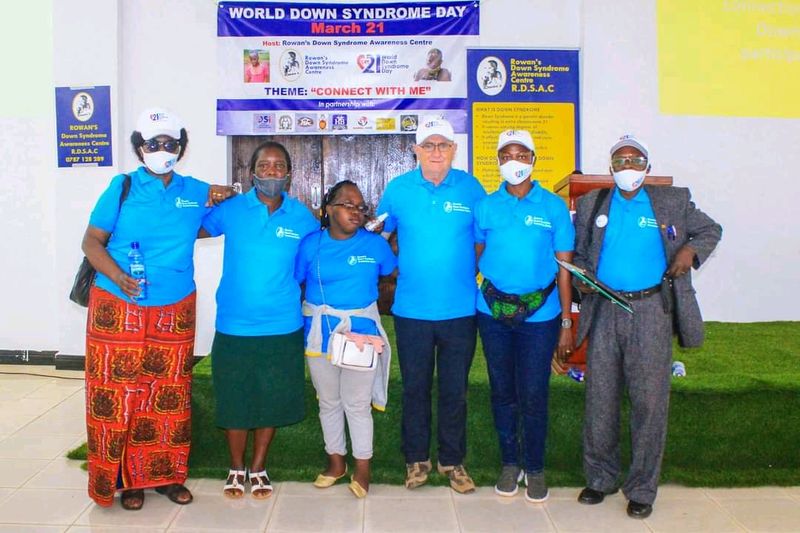
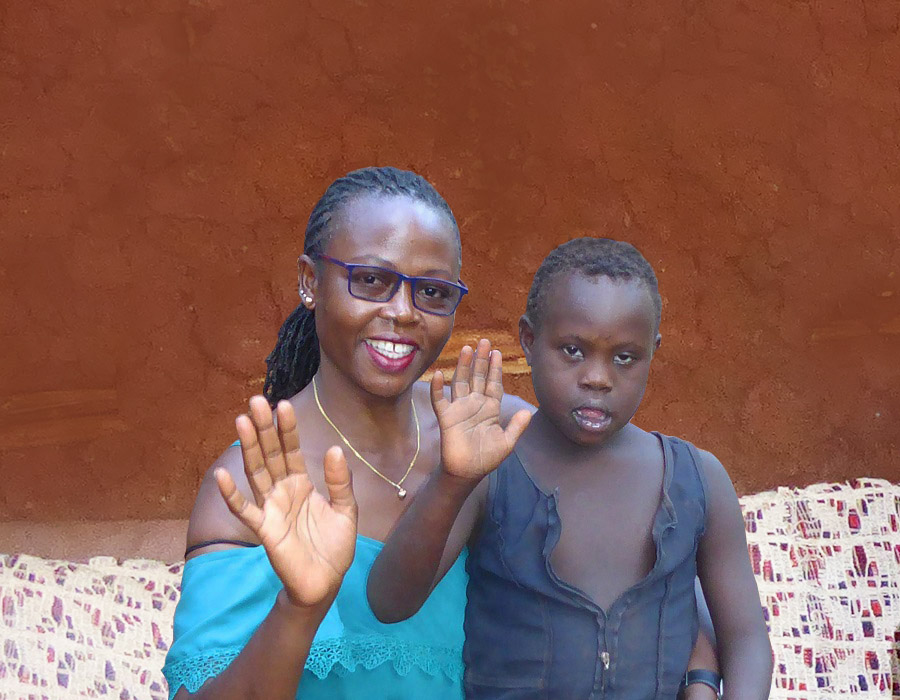
Katusabe Mildred and one of the members of Rowans Down Syndrome Awareness Centre kunihira-mackline
March 21 is globally commemorated as World Down syndrome Day (WDSD).
For Mildred Katusabe, this year’s WDSD was a special occasion to raise awareness about the condition, that most Ugandans associate with witch craft or curses.
It was the day she witnessed the launch of the Rowan’s Down Syndrome Awareness Centre (RDSAC) located in Hoima town. RODSAC is an organization she and her husband Rowan Cripps founded after they had a baby with Downs Syndrome.
Last week, March 21, during events to commemorate WDSD, The Minister for the Elderly and Disabilities Sarah Kanyike officiated the launch of RDSAC, as a non governmental organization meant to raise awareness about the condition.
Rowans Downs Syndrome Awareness Center (RDSAC) was founded to raise awareness among the public. Its founders also wish to provide high quality and affordable services for children and adults with the condition in Bunyoro and Uganda at large so they live normal and full lives.
Katusabe explains how she dealt with the challenge of raising Rowans Angonza Apuuli, from pregnancy through delivery in 2018 and subsequent operations in India.
Katusabe says that at five months of being pregnant with her fourth baby, later named Rowan, her gynaecologist suggested that she undergoes a 3-D scan to rule out any abnormalities, an option she was hesitant and inquisitive to know why the gynaecologist would reco mend for such a scan yet she had not done it in her previous three pregnancies.
“I asked him why was it necessary since I had not done it during my previous pregnancies to which he answered that because of my age there’s a problem that could come up, (I was 39 then). We went ahead to do a 3-D scan which indicated that the baby had a heart defect which was synonymous with Down syndrome, indeed when Rowan was born we found that he had Down syndrome as a mother of four and Rowan is the only child with Down syndrome”
Typically, a baby is born with 46 chromosomes. Babies with Down syndrome have an extra copy of one of these chromosomes, chromosome 21
Down syndrome is the most common chromosomal abnormality typically associated with characteristic physical features, some health and developmental challenges, and some level of intellectual disabi
According to Dr. Bawera Raymond of Masaka Hospital, Down syndrome results when abnormal cell division involving chromosome 21 occurs, he says the cell division abnormalities result in an extra partial or full chromosome 21.
“This extra genetic material is responsible for the characteristic features and developmental problems of Down syndrome. Any one of three genetic variations can cause Down syndrome which is classified” he says.
Down syndrome can be categorized as Trisomy 21, Mosaic Down Syndrome, and translocation Down syndrome.
About 95 percent of the time, Down syndrome is caused by trisomy 21 where the person has three copies of chromosome 21, instead of the usual two copies, in all cells. This is caused by abnormal cell division during the development of the sperm cell or the egg cell.
A baby born with Down syndrome usually suffers from intellectual and developmental problems. They could be mild, moderate or severe. Some people are healthy while others have significant health problems such as serious heart defects; children and adults with Down syndrome have distinct facial features, though not all people with Down syndrome have the same features.
Some of the more common features include; a Flattened face, Small head, Short neck, Protruding tongue, Upward slanting eye lids (palpebral fissures), Unusually shaped or small ears, Poor muscle tone, Broad, short hands with a single crease in the palm, Relatively short fingers and small hands and feet, Excessive flexibility, Tiny white spots on the coloured part (iris) of the eye called Brush field’s spots, Short height.

Minister Sarah Kanyike in Yellow, Katusabe Mildred in the middle and her husband Christopher Cripps at the launch of Rowans Down Syndrome Awareness Centre in Hoima
Infants with Down syndrome may be average size, but typically they grow slowly and remain shorter than other children the same age.
Bawera says that there are no known behavioural or environmental factors that cause Down syndrome.
The World Health Organization estimates that the incidence of Down syndrome is between 1 in 1,000 live births worldwide. Approximately 3,000 to 5,000 children worldwide are born with Down syndrome each year.
Some reports associate the prevalence of Downs Syndrome to absence of selective abortion services in a given geographical area.
Some parents have a greater risk of having a baby with Down syndrome and the Risk factors include, advanced maternal age, being carriers of the genetic translocation for Down syndrome, having had one child with Down syndrome.
He says old women’s chance of giving birth to a child with Down syndrome increases with ages because older eggs have a greater risk of improper chromosome divisions, but also men and women can pass the genetic translocation for Down syndrome.
A woman of 25 years has 1 in 1200 chances of having a child with Down syndrome. But chances of experiencing abnormal cell division increase with age.
Katusabe says when she found out that her child had own syndrome, she started by educating herself with what Down syndrome was.
“I had a googling session of about two days and some of the information I got online was scary but other educative once I understood what Down syndrome was and how it was going to affect my son. I cried a lot, I was scared for his future but most importantly I was worried that the heart defect may kill him. Since we were told it couldn’t be worked on in Uganda and it had to be worked on before he turned six months yet it required fifty million to be worked on in India which we didn’t have at that time,” she narrates.
She thanked her husband Christopher Cripps who did everything possible to raise the money.
Katusabe says since Cripps was familiar with the condition, it helped them how to handle the challenge.
“He did most of our mobilizations for funds from family members in the UK. His sister connected us with a doctor friend in India who was also very helpful. My other family members here also supported financially and were able to raise funds for surgery.
We travelled to India together with my husband but when we were told to wait for six weeks, he decided to return to work, and returned to India during surgery.
Katusabe says Rowans dad, loves Rowan the same way he loves their other three children. Besides, his love for her has also not changed as everything gets better every day saying she’s blessed to have him.
What are the Complications?
People with Down syndrome can have a variety of complications, some of which become more prominent as they get older.
Bawera says People with Down Syndrome are different and all have different health challenges but the most common ones are; congenital heart defect, hearing loss, vision disorder, low muscle tone, obstructive sleep apnea, mouth breathing, Gastrointestinal (GI) defects etc.
He says, about half the children with Down syndrome are born with some type of congenital heart defect. These heart problems can be life-threatening and may require surgery in early infancy, indeed Rowan at six months had to undergo a heart surgery in India.
Bawera says, for people with Down syndrome, getting routine medical care and treating issues when needed can help with maintaining a healthy lifestyle and parents need to start with health screening to find out which of these conditions a child possess such that its tackled one by one.
He says there is no way to prevent Down Syndrome however if you are at risk i.e. 35yrs and above or already have a child with Down Syndrome you may want to consult a genetic counsellor before becoming pregnant .
Down syndrome cannot be cured but early treatment programs can help improve things; speech therapy/physical/occupational or educational therapy & behavioural therapy. With support and treatment many people with Down syndrome leave happy and productive lives.
However, Katusabe says Physio therapists are available but speech and language therapists and behavioural and educational therapists are not available especially in Hoima where she lives.
She says children with Down syndrome are slow at achieving milestones, they may take long to sit, walk and talk but through physio/speech therapy, they can do all these things.
Katusabe says most people in Uganda think Downs Syndrome is caused witch craft, and others think it’s a curse. Others are quick to blame the mothers for having done or eaten something wrong when they were pregnant.
She says: “Most times people with Down syndrome are stigmatized, bullied and sometimes parents hide them. In my area they’re given nicknames like ‘zonto’, sort, wire, ‘kimadara’, ‘kimpemempeme’, ‘Mr. ntumo’
 They think that such people cannot achieve anything in their life and yet with love and support they can do them.”
They think that such people cannot achieve anything in their life and yet with love and support they can do them.”
Katusabe and her husband say their goal is to develop services which will provide occupational, speech therapy and behavioural therapy, assessment and rehabilitation for people with Down syndrome, training and other assistance for people with Down syndrome to become independent.
Katusabe adds that they want to lobby and advocate for recognition and support from government, NGOs, and other relevant bodies for favorable policies that will support people with Down syndrome to live a fulfilling life.
She says their Organisation was established to enable people with Down syndrome become independent, self-sufficient and generally accepted by society, overcoming stigma and daily challenges that they and their families face.
Currently the Rowan Down syndrome Centre in Hoima has registered 25 members without any mobilization.
Katusabe says since they have officially launched, they expect the number to increase dramatically as statistics show 1 out of 800children born have Down Syndrome.

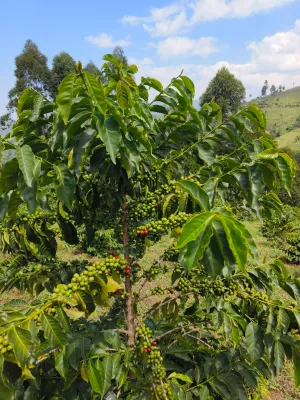
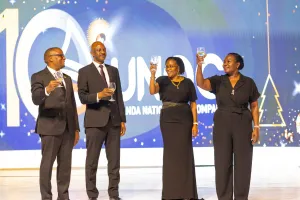
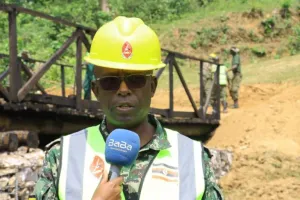
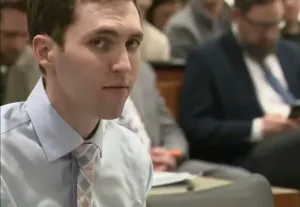

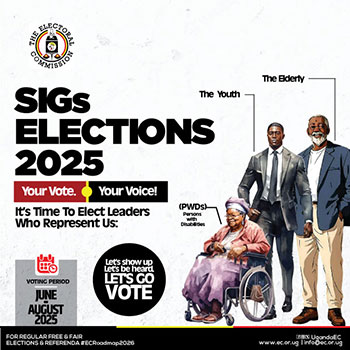

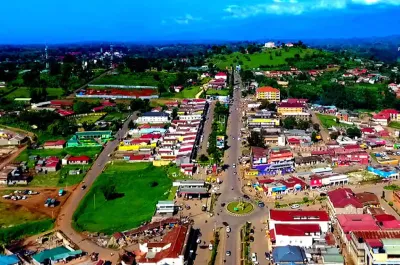




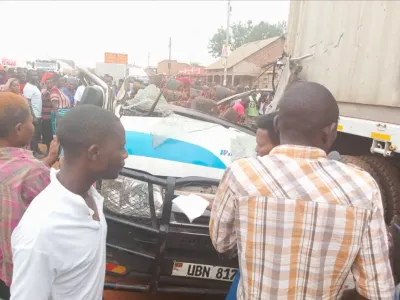
Muhamadi Byemboijana
Leave a Comment
Your email address will not be published.